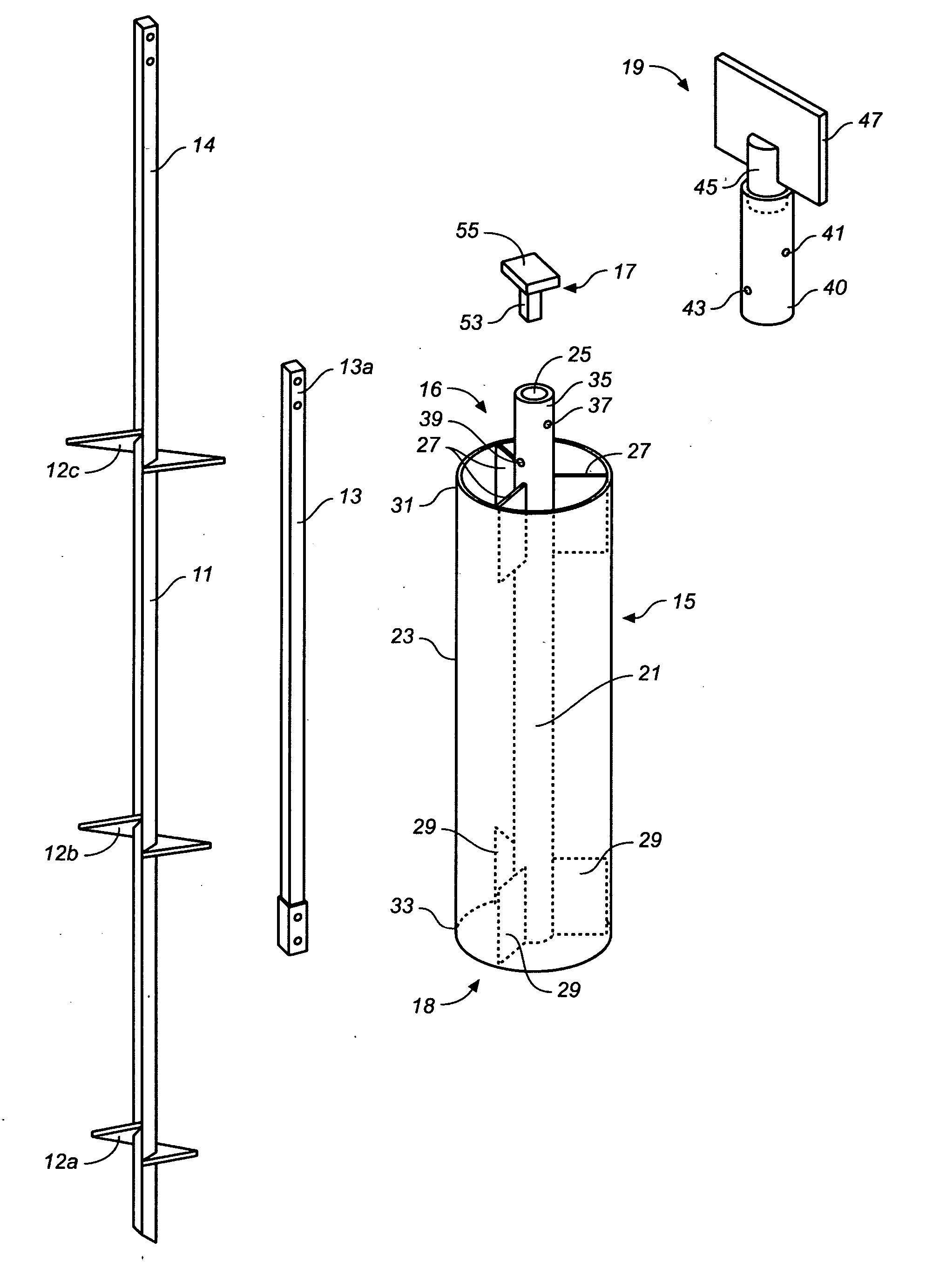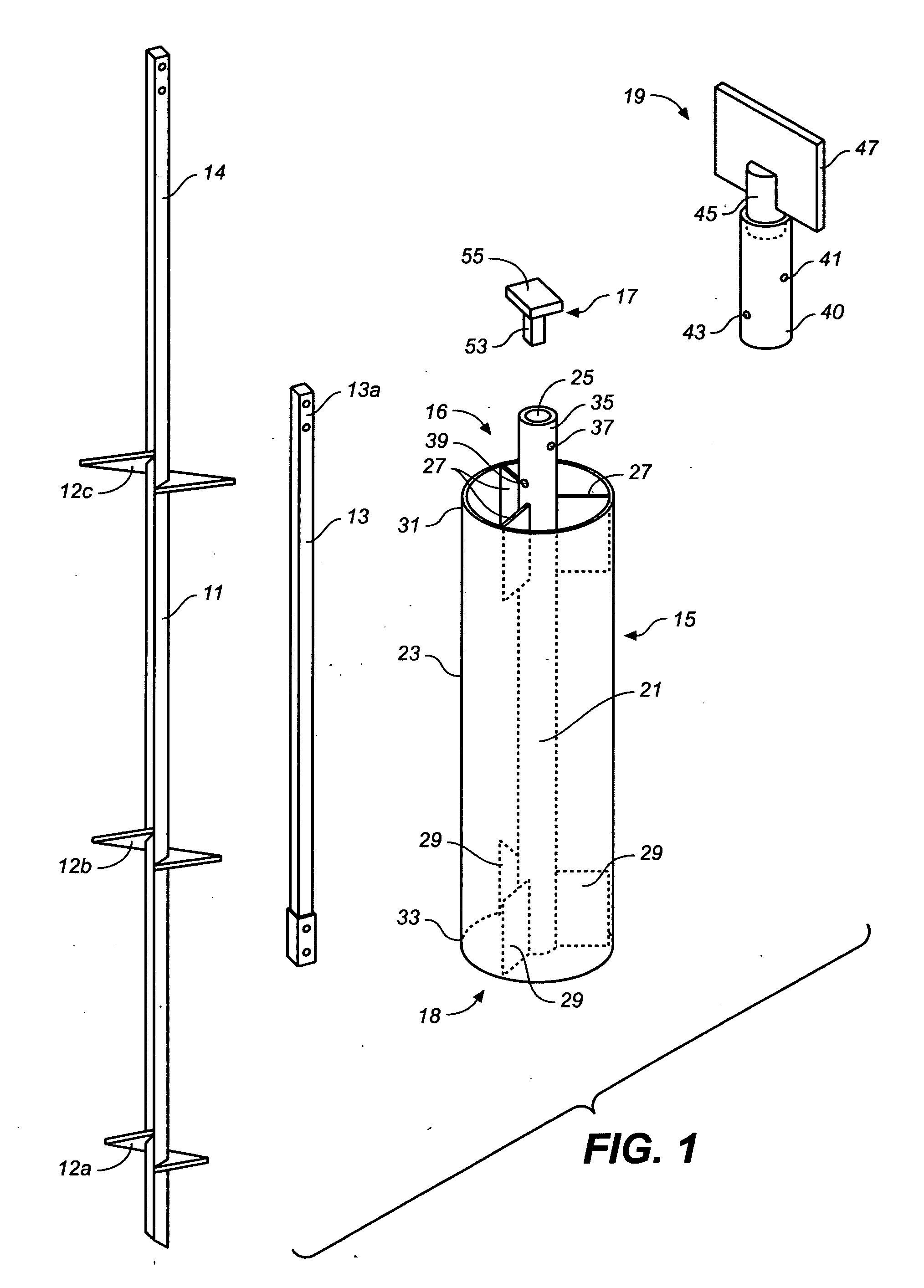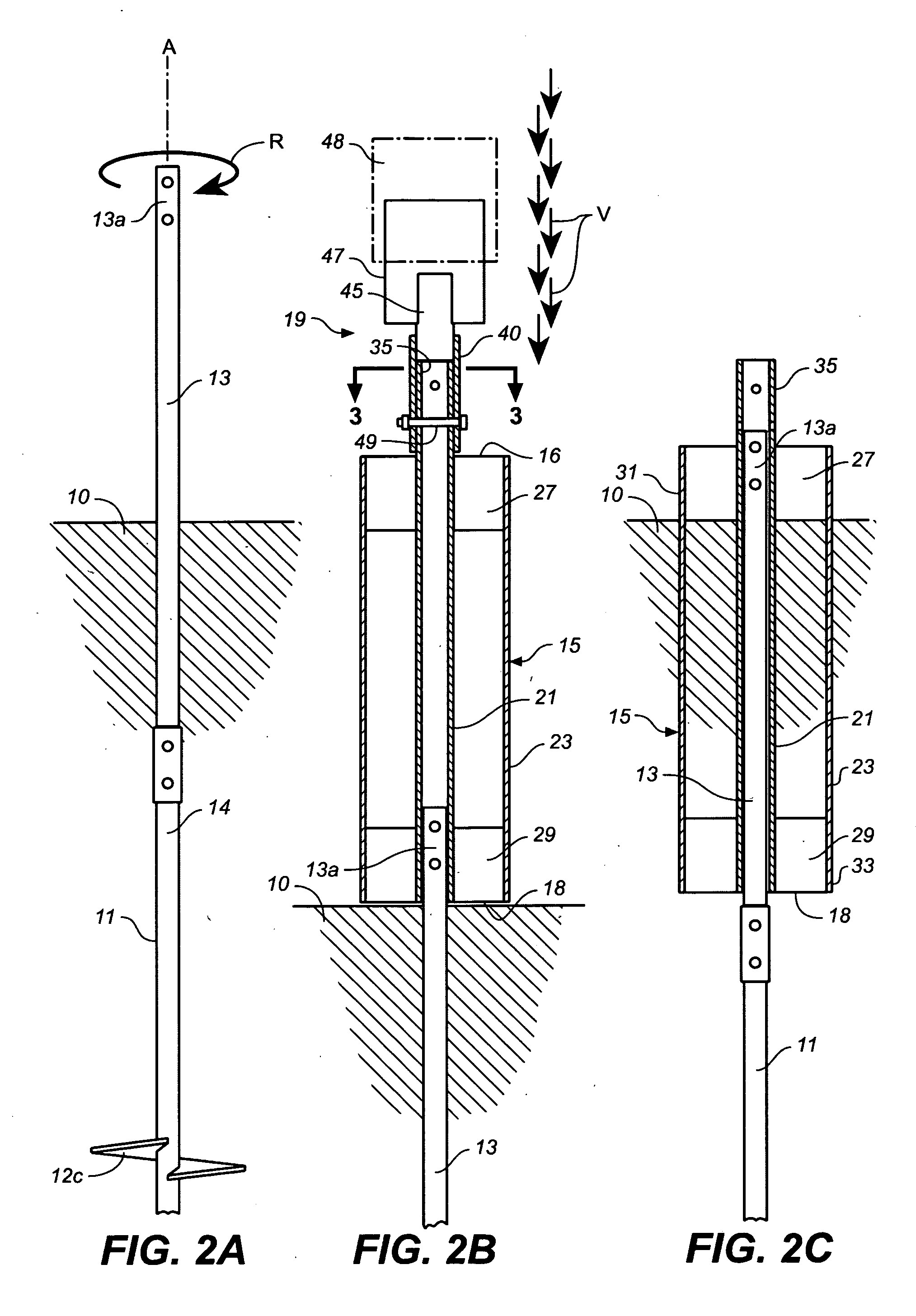Lateral force resistance device
a technology of lateral force and resistance device, which is applied in the direction of caissons, building material handling, construction, etc., can solve the problems of increasing the cost of using mat slabs in expansive soil conditions, requiring soil removal altogether, and requiring substantial cost, so as to increase the resistance of the anchoring system, increase the vertical load carrying capacity of helical anchors, and facilitate installation
- Summary
- Abstract
- Description
- Claims
- Application Information
AI Technical Summary
Benefits of technology
Problems solved by technology
Method used
Image
Examples
Embodiment Construction
[0017] Lateral force restraining devices in accordance with the present invention, abbreviated herein as “LFRD's,” are intended for use with helical anchors, steel support pipes, and the like (collectively referred to herein as “ground anchors”) used to support above-grade building foundations such as commonly used in expansive soils. Where ground anchors are used, the addition of an LFRD will provide an efficient mechanism and method for efficiently transferring lateral forces, such as generated during earthquakes and high wind conditions, from the building's above-ground superstructure to the soil into which the ground anchors are embedded. The LFRD will also provide the ground anchors with additional vertical load capacity and additional resistance to the tendency of the anchor system to rotate due to unbalanced forces and reaction forces acting on the building superstructure at one end and on the anchor system at the other.
[0018] Referring now to the drawings, FIGS. 1-3 show co...
PUM
 Login to View More
Login to View More Abstract
Description
Claims
Application Information
 Login to View More
Login to View More - R&D
- Intellectual Property
- Life Sciences
- Materials
- Tech Scout
- Unparalleled Data Quality
- Higher Quality Content
- 60% Fewer Hallucinations
Browse by: Latest US Patents, China's latest patents, Technical Efficacy Thesaurus, Application Domain, Technology Topic, Popular Technical Reports.
© 2025 PatSnap. All rights reserved.Legal|Privacy policy|Modern Slavery Act Transparency Statement|Sitemap|About US| Contact US: help@patsnap.com



